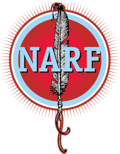
National monuments are precious places that preserve our heritage and make our country a better place to live. They are a shared resource that Americans support across political parties and demographics with more visitors coming every year. Despite this widespread support, these lands are under threat under the guise of a fictional “energy emergency.” This ignores the fact that the vast majority of public lands that have been taken from Native people already are available for mining and oil and gas development. These national monuments often are sacred to Native people and any action to open them up only serves to increase the profits of a few while devastating places immensely important to not just Native people but the entire world.
Native American people and Tribal Nations often lead the way in seeking national monument protections for the sacred places and homelands that were taken during colonization and now are held by the United States government. Each of the landscapes we seek to protect are uniquely beautiful, but they share the trait of having been home to Native people since time immemorial. They include sites used for religious ceremonies and traditional gathering spots for plants and wildlife, and they are dotted with landmarks of their long human-based histories and the cultures that they have sustained and supported.
In seeking to designate these landscapes as national monuments, Tribal communities are working to preserve our relationship to the land, our cultural heritage, and our homelands for future generations. With land-based religious practices, these protections also bolster cultural survival. We have protected these lands for generations and we won’t stop now.
National monument protections keep irreplaceable natural and cultural places available for Native and non-Native generations to come. Examples of Tribal efforts to protect homelands include Bears Ears National Monument, Baaj Nwaavjo I’tah Kukveni-Ancestral Footprints of the Grand Canyon National Monument, Chuckwalla National Monument, and Sáttítla Highlands National Monument. Incredibly, all of these monuments are now under threat.
Although each of these national monuments looks and feels different, they are similar in the fact that they are important homelands for Native peoples. To this day, each region continues to nurture Native traditions and culture. Despite the loss of legal title, Tribal Nations still actively steward and maintain their relationship with the lands that have long sustained them. We’ve protected these lands for generations—we won’t stop now.
Bears Ears National Monument can be found in southeast Utah and is easily recognizable with two striking buttes that resemble bears ears. Despite differences of history, culture, and language, all the Tribal Nations in the region—including the Hopi Nation, Navajo Nation, Ute Indian Tribe, Ute Mountain Ute Tribe, and Zuni Tribe—hold the distinctive buttes as sacred. Tribes in the region continue to collect plants, minerals, objects, and water for religious and cultural ceremonies and medicinal purposes in all the regions of Bears Ears. In seeking the national monument designation, for the first time in history, five federally recognized Tribal Nations banded together to advocate for a national monument to protect these sacred places.
Just a few hours south of Bears Ears, on the edge of the Grand Canyon, Baaj Nwaavjo I’tah Kukveni marks the ancestral homelands of the Havasupai Tribe, the Hopi Tribe, the Navajo Nation, and many other Tribal Nations. Through colonization and immigration, Tribal Nations of the region lost access to much of their homelands. Meanwhile, uranium mining companies exploited the region’s natural resources, causing negative health and environmental impacts to the Tribal Nations. Places of prayer and cultural items became inaccessible or unusable. Generation after generation, Indigenous peoples from these Nations and their non-Native neighbors advocated for protection of the lands, waters, and sacred places in their former homelands, resulting in the National Monument designation.
We cannot change the past, but we should not repeat it. We must join together to stop the taking of Native lands and preserve them for generations to come.
This Earth Day, we must prioritize protecting these national monuments and the cultures that they nourish. They belong to all of us and to future generations and we cannot let corporations take what is ours in the pursuit of fleeting profits. This Earth Day, we must protect what cannot be replaced.
Take action this Earth Day and partner with Tribal Nations to protect these sacred lands in court. Show up, speak out, and donate.



